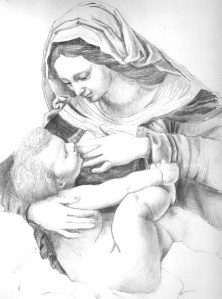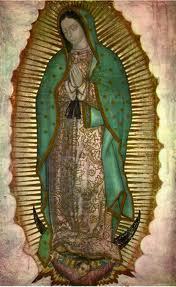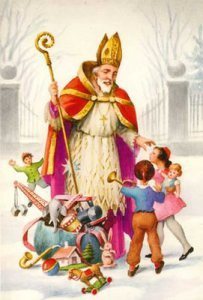Ellen Gable's Blog, page 116
December 14, 2011
Trashy Novels, Move Over
 Special thanks to Lisa Mladinich, columnist for Patheos, and Katheryn Lane, author and blogger, for their recent interviews of me.
Special thanks to Lisa Mladinich, columnist for Patheos, and Katheryn Lane, author and blogger, for their recent interviews of me.
The first is an excerpt of Lisa's interview of me for Patheos:
Shun immorality. Every other sin which a man commits is outside the body; but the immoral man sins against his own body. Do you not know that your body is a temple of the Holy Spirit within you, which you have from God? You are not your own; you were bought with a price. So glorify God in your body. (1 Cor. 6:18-20)
When we watch or read sexually arousing material, we are putting our soul in harm's way. Impurity, as I have mentioned recently, distances us from God and reduces our sensitivity to and compassion for others.
Teresa of Avila likened the soul to a garden, which is a very apt image. Our souls need tending, protecting, nourishment, and weeding. When we watch or read erotic or pornographic material, we deliberately plant weeds in among the flowers and choke off our spiritual growth.
Our culture is loaded with trashy material that tugs at our brokenness. But I've got great news for you. Beautifully written, clean fiction is making a comeback. And it's not the dull, preachy, formula stuff in the generic Christian market.
This is Catholic literature with an emphasis on storytelling, with solid values woven throughout. Authors like Ellen Gable, Karina Fabian, Michelle Buckman, Ann Margaret Lewis, and John Desjarlais (all members of the Catholic Writers Guild and bearers of the organization's "Seal of Approval"), are turning out thrilling sci-fi, fantasy, historical, romance, and mystery novels with irresistible characters, plots, humor, and pathos.
Today, I'd like to share a conversation I had with the Guild's Vice President, Ellen Gable, a writer whose work will greatly entertain you, while it treats your immortal soul with respect.
Hi Ellen! Welcome to Patheos!
Thanks, it's great to be here!
I'm a huge fan, so I know a lot about you and your work, but for our readers, tell us a bit about yourself.
I'm a freelance writer and author of four books. Although I'm originally from New Jersey, I moved up to Canada after I married my Canadian husband. We have five sons ages 12 to 24 and we live in a small town in rural Ontario.
What inspired you to write Catholic fiction?
I have always been an avid reader. Even now, I usually read two to three novels per week. Years ago, before my re-version, I devoured trashy romance novels like they were candy.
Like anyone, I love a good story, but I especially enjoy a compelling romance or suspense novel. As I grew in my faith, I no longer had any desire to read fiction with explicit sex scenes. So I began seeking out Christian fiction. However, I yearned to read good fiction with Catholic themes. I missed this in the Christian fiction I was reading after my re-version. And I didn't like the formula and the predictability of many of these novels.
To read the rest of the interview, click on the link below:
Next, I'd like to share an excerpt of Katheryn Lane's interview with me:
Can I start by asking you how you became an author?
I actually began writing in a journal 20 years ago to ease my grief during miscarriages. That journal became my first published article in 1995 called "Five Little Souls In Heaven." Six years later, I began writing my first book because I wanted to share the parallel stories of myself and my great-grandmother.
However, I knew I would have to fictionalize the stories, amalgamate incidents and change names so that's how my first novel, Emily's Hope, was born. I couldn't wait to write more novels and my second and third novels are totally fictitious and I had a lot more fun writing them.
To read the interview in its entirety, click here.

December 13, 2011
Not My Mother's Journey Book Review
 "I can do all things through Christ who strengthens me." (Phil 4:13) could well be the theme of Heather St. Aubin-Stout's book, Not My Mother's Journey. It is the story of one woman's experience with surviving breast cancer.
"I can do all things through Christ who strengthens me." (Phil 4:13) could well be the theme of Heather St. Aubin-Stout's book, Not My Mother's Journey. It is the story of one woman's experience with surviving breast cancer.
It was a challenging read because of the subject matter, although I can see how this book would be helpful to women going through the same journey. St. Aubin-Stout said in a recent interview, "we all will face difficulties in our lives, and with faith, community, hope, and love we can persevere through them."
The author's mother died at a relatively young age (45) of breast cancer. When the author was first diagnosed with a breast abnormality in 2000, it was benign. However, when she was diagnosed years later in 2006, unfortunately it turned out to be cancer. The book takes the reader through her entire journey, not only with cancer but in the day-to-day life of her family. This includes experiences with a son who made poor choices which led to difficult repercussions for the family.
Written in the present tense, it is compiled entirely of diary entries and emails to and from the author. It reads more like a journal than a non-fiction book and also includes photos of the author and her mother.
I can imagine how therapeutic the writing of this book was for St.Aubin-Stout and her enthusiasm to share her candid story is to be commended. The author stresses that "A lot has changed in the cancer community over the last twenty years. It is very important to be your own best advocate, to be diligent with your health, your mammograms and early detection saves lives."
I especially recommend this book for those who have experienced breast cancer.
Copyright 2011 Ellen Gable Hrkach

December 12, 2011
Self-Promotion…or the Strangest Place I've Ever Sold A Book
 My newest post for the Catholic Writers Guild Blog talks about self-promotion and some of the unique places I've sold books:
My newest post for the Catholic Writers Guild Blog talks about self-promotion and some of the unique places I've sold books:
Since a self-published author doesn't have a publisher to promote them, it's important to take every opportunity to promote oneself. Keep copies of your books in your car, always have business cards or book marks in your purse or wallet and…don't be afraid to talk about your books.
I've sold books to the insurance man, the animal control officer, at family functions and churches. I've sold books to people on the beach and at the grocery story.
But the strangest place I've ever sold a book was at a local club/bar.
Now, I never go to bars or clubs, but this particular night, my husband was performing with his jazz fusion band. During one song, he actually plays two different guitars. My husband is a very talented guitarist (see video).
That night, as I watched my husband perform, I noticed a tall fellow swaying to the music and staring at my husband. When the song finished, the band took a break. The tall man ran off in the direction of the stage. I followed close behind. He spoke to my husband with the adulation of an adoring fan.
"Man, you're the best guitarist I've ever seen! The way you play those two guitars…it's just incredible! You're better than Mick Jagger," and he went on to list three or four other famous guitarists.
Now, my husband has enough humility for both of us, so, seeing me, he didn't respond to the praise. Instead he replied, "This is my wife, Ellie." My husband's newest fan turned to me and said, "Your husband is the most incredibly talented guitarist I've ever seen or heard."
"Isn't he amazing?" was my response.
"He sure is." We chatted for a few moments, then, out of the blue he said, "He's so good, you should write a book about him."
I'm sure I burst out laughing. "Well, actually, I have written a book. It's a novel called Emily's Hope and it is loosely based on my life…and my husband is a major character in the book."
"Really?"
"Yes, really."
"Do you have any copies with you?" (As I said before, self-published authors should always be prepared.) So I responded, "Of course."
Admittedly, this 40-year-old tipsy man probably was not the target audience for my first novel. And…my husband felt I took advantage of a fellow who was drinking, and perhaps I did. But, well…a sale is a sale.
Humor aside, I've often wondered about this fellow who walked into the bar to have a good time and walked out with my novel in his hands. I hope he's doing well.
Text and photo copyright 2011 Ellen Gable Hrkach

Our Lady of Guadalupe
Today is the beautiful Feast of Our Lady of Guadalupe. In 1531, Our Lady appeared in Mexico to a poor Indian, Juan Diego, at a time when human sacrifice was commonplace.
The following is an excerpt from a website with interesting background information and many images to download: www.sancta.org
"After complying to the Bishop's request for a sign, She also left for us an image of herself imprinted miraculously on the native's tilma, a poor quality cactus-cloth, which should have deteriorated in 20 years but shows no sign of decay 478 years later and still defies all scientific explanations of its origin."
Pope John Paul II named Our Lady of Guadalupe the patron saint of the unborn.
To read more about Our Lady of Guadalupe:
http://www.sancta.org/intro.html
There are many ways to celebrate this feast. Our family usually has a Mexican type dinner like tacos or fajitas. Although our kids are older now, in past years, we have celebrated by allowing them (youngest to oldest) to break open a pinata.
What does your family do to celebrate this beautiful feast day?

December 10, 2011
Sunday Snippets – December 11
 Join me and other Catholic bloggers at RAnn's Place for Sunday Snippets. Here are my contributions for the week:
Join me and other Catholic bloggers at RAnn's Place for Sunday Snippets. Here are my contributions for the week:
A Catholic Alternative to Trashy Novels, my latest post at Amazing Catechists. It's not too late to win one of four print and four Kindle copies of my novels. Just leave a comment anywhere on the Amazing Catechists site before Monday (to win one of my books) or Thursday, to win any of the remaining books.
The First Church Bells by Catherine Doherty Beautiful Advent reflections from the foundress of Madonna House.
The Feast of St. Nicholas This includes some great links about St. Nicholas and fun activities for kids.
Let it snow, Let it snow A few photos I took this past week.
A Woman Wrapped in Silence
Reflections on Mary by Catherine Doherty.
7 Quick Takes Friday (in connection with Conversion Diary's post) includes the more recent video of my husband and three of our sons performing Carol of the Bells (Trans Siberian Orchestra arrangement)…and with my youngest son, Paul, on the drums.

December 9, 2011
7 Quick Takes Friday – December 9

Here are the things I'd like to share this week for Seven Quick Takes, hosted at Conversion Diary:
1. Special thanks to Debra Murphy of Catholic Fiction.net for the great review of Stealing Jenny!
2. December is my favorite month for feast days. There are a lot of them: St. Nicholas (Dec. 6), Immaculate Conception (Dec. 8), Our Lady of Guadalupe (Dec. 12), St. Lucy (Dec. 13), Christmas and the Feast of the Holy Innocents.
3. Interesting article at LifeSiteNews entitled "Contraception a Clear Factor in Decline of Church Numbers."
4. Just finished reading A Book of Saints for Catholic Moms by Lisa Hendey! Outstanding book and one that I highly recommend to everyone! Review to follow next week.
5. The "Amazing" Book giveaway at the Amazing Catechists website is continuing until December 15th. Stop by and leave a comment anywhere on the site to be entered!
6. I'm looking forward to reading Elizabeth Schmeidler's new novel: A Child Will Lead Them
7. Last, but not least, here is the more recent version of my husband and three of our sons playing "Carol of the Bells," (arrangement by Trans Siberian Orchestra) to the screaming students of ADHS. This version includes my youngest son (age 11) who is playing drums.

Find more 7 Quick Takes at Conversion Diary.
Copyright 2011 Ellen Gable Hrkach

December 8, 2011
A Woman Wrapped in Silence

Today we celebrate Mary's Immaculate Conception. She was conceived "without sin" in her mother's womb.
On this Feast Day, I'd like to share another excerpt from an article by Catherine Doherty, entitled "A Woman Wrapped in Silence."
Just think about that strange, incredible, unbelievable faith of a young girl. At fourteen years old she became the Mother of God and the Mother of men. She knew full well that people would not understand that she had conceived by the Holy Spirit. For a long time after her marriage to Joseph she must have been the talk of the town. In those days the women used to wash their linens in ponds. When she brought her linen I'm sure people began to whisper about her. I can just see those gossipy women. But Our Lady never said anything. She was the woman wrapped in silence.
To read the entire article, click here.








December 7, 2011
Let it Snow, Let it Snow…
December 6, 2011
Feast of St. Nicholas
Today is the Feast of St. Nicholas. Two years ago, I shared how our family celebrates this wonderful feast day.
"Good St. Nick" was the original Santa Claus. He wasn't an orphan named "Kris Kringle." (Kris Kringle is actually derived from "Christkindl" or the Christ Child in German). The following is an interesting and informative article by Carol Myers entitled "St. Nicholas and the Origins of Santa Claus."
http://www.catholiceducation.org/articles/religion/re0594.html
"Other artists and writers continued the change to an elf-like St. Nicholas, "Sancte Claus," or "Santa Claus," unlike the stately European bishop. In 1863, political cartoonist Thomas Nast began a series of annual drawings in Harper's Weekly which were based on the descriptions found in the poem and Washington Irving's work. These drawings established a rotund Santa with flowing beard, fur garments, and an omnipresent clay pipe. As Nast drew Santas until 1886, his work had considerable influence in forming the American Santa Claus. Along with changes in appearance, the saint's name changed to Santa Claus as a natural phonetic alteration from the German Sankt Niklaus and Dutch Sinterklaas."
There are also more informative articles at the St. Nicholas Center website:
http://www.stnicholascenter.org/Brix?pageID
There is a link for crafts and ways to celebrate St. Nicholas Day: http://www.stnicholascenter.org/Brix?pageID=102
as well as a page for kids: http://www.stnicholascenter.org/Brix?pageID=166
Happy Feast of St. Nicholas!








December 5, 2011
The First Church Bells by Catherine Doherty
 The following is an article entitled "The First Church Bells" from the book "Donkey Bells" by Catherine Doherty (my all-time favorite Advent book) which is available from Madonna House. Enjoy this beautiful story from Catherine:
The following is an article entitled "The First Church Bells" from the book "Donkey Bells" by Catherine Doherty (my all-time favorite Advent book) which is available from Madonna House. Enjoy this beautiful story from Catherine:
It came to me, during these days of Advent, that I should share with you a custom which is not necessarily liturgical but which adds to the enjoyment of this lovely season. It has deep spiritual connotations; at least it did for our family, and for many others I knew when I was a young child.
When I was a little girl, my mother used to tell me that if I was good during this holy season of Advent, and offered my little acts of charity and obedience throughout Advent to the little Christ Child for a gift on his birthday, then sometime during Advent, at first very faintly and then quite clearly, I would hear bells. As she put it, the first church bells.
These were the bells around the neck of the little donkey that carried Our Lady. For mother explained that Our Lady carried Our Lord. She was the temple of the Holy Spirit, the first 'church' as it were, since Christ reposed in her. And the donkey, carrying Our Lady and sounding his bells as he walked, wore the first church bells.
Around the second week of Advent, mother wore a little bracelet that had tinkling bells. As she moved her hand I could hear them tinkle, and I got excited because I associated them with the donkey's bells.
As young as I was, my imagination would build up a lot of little stories about the trip of Our Lady from Nazareth to Bethlehem — stories which I would share with my mother, and which would spur me on to further good deeds and little sacrifices.
During the third week of Advent, mother's bracelet miraculously got many more bells on it. Their sound grew louder and louder as Christmas approached. It was wonderful.
My brother and I used to listen. Mother's bells were first around her wrist and then around her knee too. Then more bells, as it got closer to Christmas. We were really excited about them.
I introduced this little custom in Madonna House. During Advent, I wear a kind of bracelet that can be heard as I walk or move, in whatever room of the house I may be. The members of our family tell me that it spurs them on, even as it did me when I was a child, to meditate more profoundly on the mystery of Advent.
Here at Madonna House, we have begun in these last few years to make a collection of miniature donkeys — of wood, glass, ceramics, rope — you name it. And we have an album of Christmas cards (which we save from the many we receive) that depict the donkey in the manger scene.
The presence of the donkey and the ox in Scripture is symbolic of the prophets who foretold the Incarnation. And also of the fact that "the ox and ass know their Master's voice, but Israel doesn't know the voice of God" (Isaiah 1:3). So, you see, there is some spiritual foundation for my love for the donkey which brings such great joy to my heart.
I'm sure that, as a child, Christ rode on a donkey many times. And also as a man, of course. In Scripture we know of only two times: one was when the donkey carried Our Lady, who in turn carried God, from Nazareth to Bethlehem. The other was when the donkey carried Christ into Jerusalem as the people laid palm branches before Him, proclaiming him king.
Let us think for a moment: What kind of animal is a donkey? It is a beast of burden, the animal of the poor. Once again, the immense theme of poverty is illustrated in an animal. God chose the humblest, the smallest in status, because among the animals the donkey is considered very low. So God is teaching us a lesson here — a lesson of humility, of poverty, and of simplicity.
Have you ever seen a newborn donkey? Well, every donkey has a black cross on its gray fur, a marking which is especially noticeable just after it is born from its mother's womb. It gets less clear as the donkey matures, but still is visible. I share this fact with you to teach you to open your heart to the bells of the donkey that carried Our Lady and also God.
The breath of the donkey and the ox made the stable warm. So we meditate on several things at once: the poverty and humility of the donkey God chose, and which should be our poverty and humility; and the breath of our love, which should warm God in our neighbor constantly.
Let us remember that the donkey also had no room at the inn. Neither woman, nor man, nor donkey had a place at the inn. So they went to live in a poor stable that wasn't too well prepared for animals, let alone as a decent habitation for human beings.
Now, another meditation comes to us. Think of the millions of people who are left homeless on our streets. Tragic is this situation. We, as apostles, must be very careful that we do not exclude anyone from the inn of our heart.
I pray that our heart, our soul, our ears will hear very clearly 'the bells of the donkey,' not only in Advent but throughout the year. For whoever who is pure of heart and childlike shall hear the bells of the donkey ring in their life.
This article is free to use under the Creative Commons Licenses























